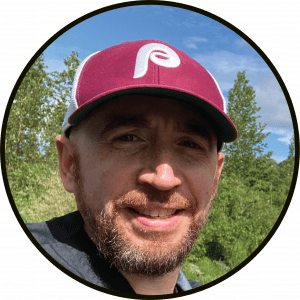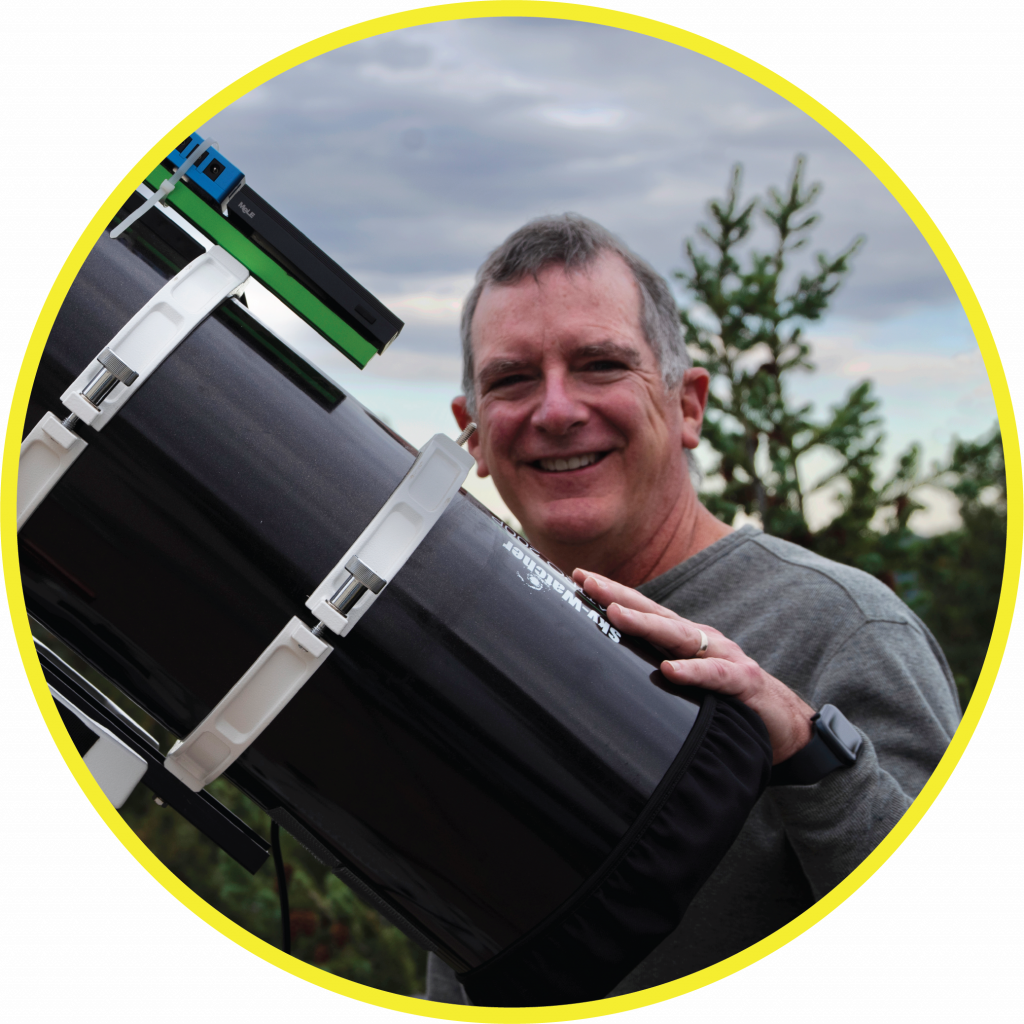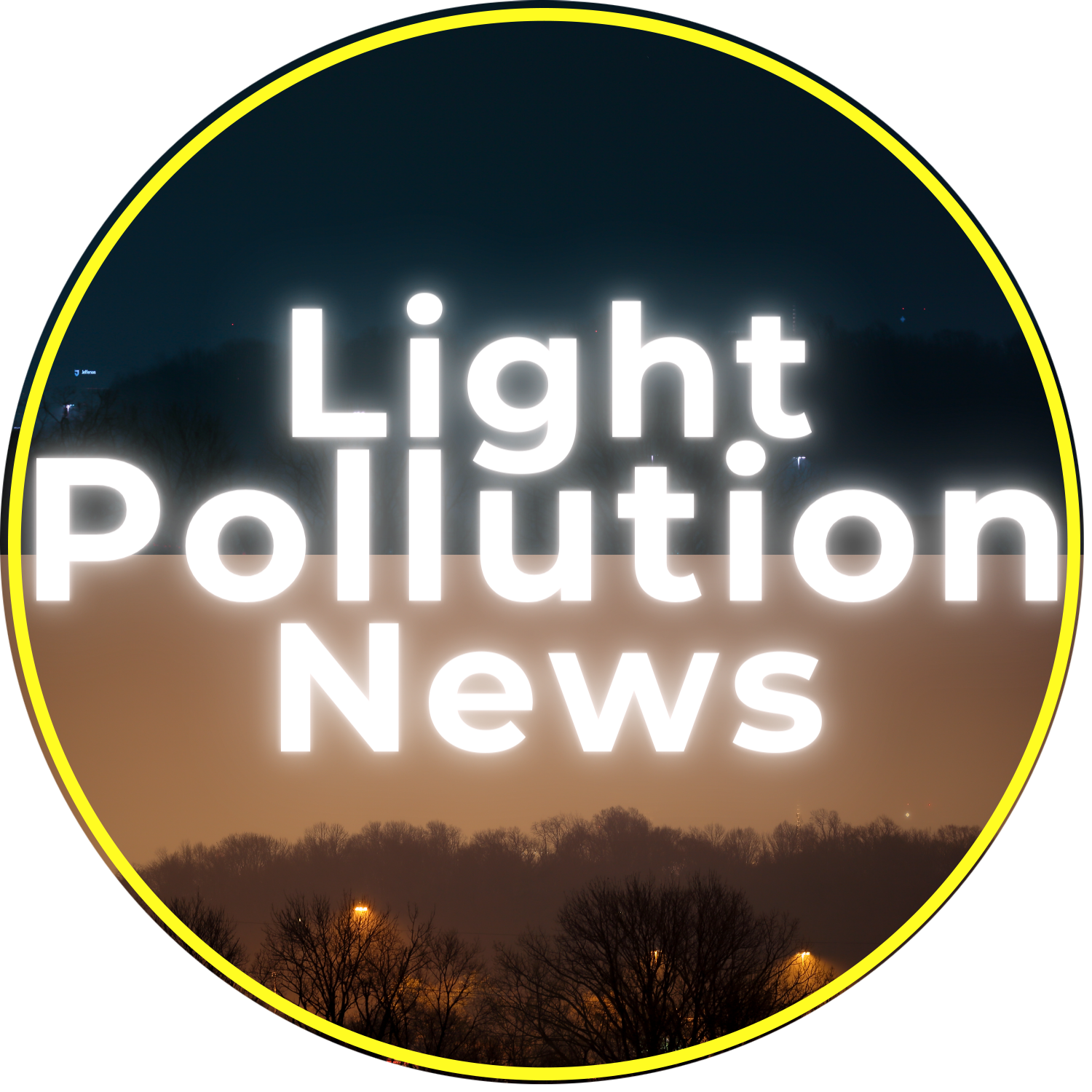
November 2024: Dopamine Rush. Light Pollution News.
Join our mailing list. Follow us at LinkedIn, Instagram, Facebook, & Tiktok.
This Episode:
In this episode, we look at the tale of the Bethany Beach firefly – will it go on the endangered list? Is Noctalgia driving astrotourism? And, we talk about firefox mushrooms and foxfire browsers, or is it the other way around?
Like What You See and Hear? Consider Supporting the Show.
A hearty thank you to all of our paid supporters out there. You make this show possible.
For only the cost of one coffee each month you can help us to continue to grow. That’s $3 a month. If you like what we’re doing, if you think this adds value in any way, why not say thank you by becoming a supporter!
Why Support Light Pollution News?
- Receive quarterly invites to join as a live audience member for recordings with special Q&A sessions post recording with guests.
- Receive all of the news for that month via a special Supporter monthly mailer.
- The satisfaction that your support helps further critical discourse on this topic.
Support Light Pollution News!
Host:

Guests:



Kevin Beare
Kevin Beare is a local Funeral Director in his hometown of Cape May, New Jersey. Cape May Astro was the silver lining of Covid-19. Kevin was like many others who after months of the lockdown began to think outside lockdown protocols. Kevin started looking for a telescope in August of 2020 and located a company in France that was making and selling Smart Telescopes that don’t have a lens and viewfinder like traditional telescopes. Smart telescopes are the new technology that allows you to connect a smart telescope to your cell phone or a tablet to view what is being observed on the telescope. Kevin brought his first telescope to the middle of Cape May to give his new telescope a try on October 31st to share the Full Moon. Within 30 minutes Kevin had 50 people surrounding his telescope admiring his first Street Corner Astronomy Pop–Up Experience. He started Cape May Astro on Instagram in the spring of 2022 and now has a following closing in on 13,000 followers who are fascinated with his sharing what Kevin calls “The Beauty in the Darkness”.
Kevin’s grandmom Beare started his interest in the night sky when she took Kevin to his first field in Williamstown, New Jersey where he was introduced to his first meteor shower and he was instantly hooked and stated out loud, “One More, One More”. This summer, Kevin had the great experience that he was sharing his goal of sharing the night sky with anyone who stopped by to check out what he was up to. Kevin was out on the Cape May Promenade with his three telescopes when a mother came up to Kevin to explain that her family stopped by last summer with her husband and their daughter Ava who was 6 years old last summer when she saw him sharing his telescopes. This summer this same mother came up to Kevin and explained that Ava now 7 asked her parents on their way to Cape May if the “Guy with the Telescope” would be out. He was! His mission to share and educate passers-by was validated by 7-year-old Ava.
Kevin is honored to share the night sky in his hometown and is looking forward to taking Cape May Astro on the Road to continue sharing “The Beauty in the Darkness” with AMERICA. Telescopes are time machines that take us back in time. They help Kevin to be grounded and humbled as well as everyone that takes a look at his observations with his three telescopes.
Cape May Astro Motto — “LIFE is Meant to be FELT not just Lived”
Frank Turina
Frank Turina, is an astrophotographer, night sky advocate, and environmental educator with more than 15 years of working with the United States National Park Service Night Skies Program. You can learn more about his examinations of the ecological and cultural effects of light pollution from his website, at the Night Sky Resource Center.
Michael Rymer
Michael Rymer was born and raised in Dallas, Texas, where he seldom saw the night sky in its natural state. Later in his life, though, he came to discover a love for astronomy and astrophotography, searching for dark skies and how he could help protect them.
Michael enjoys hiking in the mountains and deserts of the Western U.S., and he loves to spend time with his camera and telescopes taking pictures of the beauty of the cosmos. He is the Vice President of the Texas Astronomical Society of Dallas and has been a member of the club since 2020. He joined the DarkSky Advocates Network in 2021 and has continued to learn how he can talk with others about the dangers of light pollution to us and our world.
Michael has a B.A. in Journalism from the University of Oklahoma and an M.S. in Recreation and Tourism Management from the University of Northern Alabama.
Article List:
- New words – 9 September 2024, Cambridge Words.
- Why the World Needs the Night: A Visit to the Appalachian Mountain Club’s International Dark Sky Park, Laura Poppick, Appalachia.
- Cambria Hopes to Become the Next Dark Sky Community, Sivani Babu, San Diego Magazine.
- DarkSky launches new book club featuring “Night Magic” by Leigh Ann Henion., Drew Reagan, Dark Sky International.
- Lights Out Greenwich! New Town Lighting Regulations Target Light Pollution, Greenwich Free Press.
- ‘Clear message’ from community on dark skies, Sunshine Coast Council.
- Proposal for Sunshine Coast hinterland to become stargazing destination with Dark Sky Reserve status, Janel, Shorthouse, ABC News.
- Vineyard Wind’s nighttime lights still visible, Jason Graziadei, Nantucket Current.
- After turbine incident, feds halting Vineyard Wind operations, Chris Lisinki, NBC 10.
- Nighttime nightmares grow for stargazing spots, Adrienne Lamb and Rick Bremness, CBC News.
- Headlands Intl. Dark Sky Park expands parking lot to meet increased demand, Daniel Zivian, UpNorthLive.
- Service proposes to list the Bethany Beach firefly as threatened, Jalyn Williams, US Fish & Wildlife Service.
- Taking a Stand for Firefly Species Facing Extinction, Candace Fallon, Xerces Society.
- Evaluating firefly extinction risk: Initial red list assessments for North America, PLOS ONE.
- This Green-Flashing Firefly Could Become the First Ever Listed as Endangered in the U.S., Alexa Robles-Gil, Smithsonian Magazine.
- Petition for the Emergency Listing of the Bethany Beach Firefly (Photuris bethaniensis), Xerces Society.
- Dark Skies Initiative up for discussion again in Environmental Subcommittee meeting, Zakiya Jennings, CoastTV.
- Behavioural and transgenerational effects of artificial light at night (ALAN) of varying spectral compositions in zebrafish (Danio rerio), Science of the Total Environment.
- Contrasting effects of light and noise pollution interact with natural vegetation remnants: Human-related indicators of the habitat suitability for ungulates in the urban landscape, Ecological Indicators.
- Night melatonin levels affect cognition in diurnal animals: Molecular insights from a corvid exposed to an illuminated night environment, Environmental Pollution.
- The short-term effects of planktivorous fish foraging in the presence of artificial light at night on lake zooplankton, Journal of Plankton Research.
- Foxfire Brings Magical Light to the Dark Forest, Leigh Ann Henion, Atlas Obscura.
- Town of Paonia, Drew Reagan, Dark Sky International.
- Already the largest in the world, Eastern Oregon’s dark sky sanctuary is expected to grow, Eric Tegethoff, Oregon News Service.
Light Pollution News: November Highlights:
Stunning Dark Sky Photography and Light Pollution Awareness: May 2025 Update
Award-Winning Bioluminescent Photography at Beaker Street Science Festival
Kick off the second half of May with an inspiring highlight from the Beaker Street Science Festival in Tasmania, Australia. Toby Schrapel won the People’s Choice Award for his breathtaking photograph capturing a biofluorescent frog on a glowing mushroom. This unique image showcases the wonders of bioluminescence and the importance of preserving our natural nightscapes.
The Impact of Light Pollution: Hobart City’s Vanishing Milky Way
Another standout photo from the festival dramatically illustrates the effects of light pollution. The image contrasts Hobart City’s illuminated horizon-where the Milky Way is invisible-with progressively darker skies where the galaxy emerges in full splendor. This visual underscores the urgent need for dark sky preservation.
Understanding Noctalgia: The Sadness of Lost Starry Skies
The term noctalgia-featured by Cambridge University Press-describes the sadness felt when light pollution erases the night sky. Laura Poppick’s article in Appalachia explores this emotion, recounting her childhood stargazing experiences and the gradual loss of visible stars due to increasing artificial lighting.
Maine Woods International Dark Sky Park: A Haven for Stargazers
The Maine Woods International Dark Sky Park covers 150,000 acres and offers exceptional opportunities for stargazing. As Jenny Ward of the Appalachian Mountain Club notes, the park aims to rekindle a sense of wonder and connection with the cosmos. Read more about the park’s creation and its role in dark sky conservation.
Elk Island National Wildlife Park: Rising Visitor Numbers and Conservation Challenges
Just outside Edmonton, Alberta, Elk Island National Wildlife Park has seen a surge in visitors seeking dark skies, leading to increased environmental pressures such as illegal campfires and wildlife disturbances. With over 5,000 visitors during a recent star party, park officials are implementing new measures to protect the ecosystem.
Headlands International Dark Sky Park: Meeting Growing Demand
In Michigan, the Headlands International Dark Sky Park has expanded its parking and installed red guidance lighting to accommodate the growing interest in night sky tourism. This park serves as a model for balancing visitor access with ecological stewardship.
Policy Updates: Greenwich, Connecticut Adopts New Light Pollution Regulations
Greenwich, CT, is leading the way in light pollution reduction with new exterior lighting guidelines:
- All outdoor lighting must be fully shielded (except main entry lights)
- Flood lights require motion sensors
- LED lighting must be 3000K or lower
- Uplighting remains banned
These changes, driven by local ecological coalitions, aim to protect both wildlife and the night sky.
Offshore Wind Farms and Dark Sky Policy: Nantucket’s Lighting Challenges
Nantucket’s offshore wind farm faces scrutiny for failing to implement an Aircraft Detection Lighting System as required, raising concerns about unnecessary light pollution and compliance with environmental agreements.
Sunshine Coast, Australia: Community Support for Starry Sky Protection
A recent survey on the Sunshine Coast, Queensland, revealed overwhelming support (95% of respondents) for policies protecting the night sky. The proposed inland preserve would cover 337 square miles, boosting eco-tourism and supporting sea turtle-friendly lighting initiatives.
Cape May and Delaware: Bird Migration, Fireflies, and Responsible Lighting
Cape May, NJ, and Lewes, DE, are focusing on responsible lighting to protect migrating birds, monarch butterflies, and the endangered Bethany Beach Firefly. Delaware’s freshwater tidal wetlands, crucial for firefly habitat, face threats from development and light pollution.
Firefly Conservation: Light Pollution’s Threat to Biodiversity
Research shows that artificial light at night disrupts firefly mating and threatens up to 17 species with extinction. Light pollution, pesticides, habitat loss, and climate change all contribute to declining firefly populations.
New Research: Artificial Light Increases Anxiety in Wildlife
A recent study in Science of the Total Environment found that artificial light at night increases anxiety in zebrafish and their offspring, highlighting the broader impacts of light pollution on animal behavior and ecosystems.
Ecological Studies: Light Pollution’s Effects on Wildlife
- Wild Boar: Avoid artificial light but not noise pollution.
- Indian House Crows: Dim lighting impairs cognition and melatonin production.
- Zooplankton: Artificial light alters behavior and increases predation by fish.
Join the Dark Sky Movement: Book Club and Community Designations
The Dark Sky Book Club launched with “Night Magic: Adventures Among Glowworms, Moon Gardens, and Other Marvels of the Dark” by Leigh Ann Henion. Explore the wonders of bioluminescent mushrooms and the history of night navigation.
Congratulations to Paonia, Colorado, for achieving International Dark Sky Community status! Oregon’s Outback Dark Sky Sanctuary is also expanding, thanks to a coalition of conservation groups.
Light Pollution News: November Read Along
I want to start things off for this month’s second half with this interesting photo contest, whereby a contestant named Toby Schrapel took the People’s Choice Award for capturing a frog sitting on a mushroom.
So what! -you may say!
Well, both, the frog and the mushroom are glowing with a biofluorescent/bioluminescent green! The award was for the Beaker Street Science Festival – a festival of, well, all things science that takes place down in Tasmania, Australia!
There’s also another photo (of which all of these photos are truly spectacular), but this one illustrates the impact of light pollution brilliantly. The image starts on the left with Hobart City’s lit up horizon, above which you can’t see the Milky Way, then as the horizon gradually becomes less light polluted the Milky Way becomes apparent.
Amazing and dramatic!
It feels like only yesterday that we heard this word for the first time, but back on September 9th, it was the featured word of the day by Cambridge University Press.
What is the word you ask? Well, Noctalgia, of course – is defined as “a feeling of sadness felt by some people because light pollution means they can no longer see a dark sky at night.”
Well speaking of Noctalgia, in a piece from the journal, Appalachia, Laura Poppick weaves the tail of the Maine Woods International Dark Sky park by first relating it to her childhood experience of growing up and sneaking out onto her roof to look at the stars. Poppick then laments gradually seeing each one of her neighbors pop on new flood lights thereby dimming her experience with subsequent views of the nighttime sky.
The feeling of curiosity, wonder, and connection that initially guided Poppick is also echoed by the Appalachian Mountain Club’s brand director – Jenny Ward, whereby Ward is quoted as saying “I want people to feel this.”
The article itself goes into the makings and justification for the 150,000 acre Maine Woods International Dark Sky Park (which I hope to actually stargaze from someday). It’s a very interesting piece and highly recommend you at home giving it a read.
Well, this story sets us up nicely for an interesting piece that I saw in the CBC. Just outside of Edmonton, Alberta sits the Elk Island National Wildlife Park. It appears that more folks are seeking out the park because they simply can’t see the stars from Edmonton. The increased nighttime uses have seen a corresponding uptick in illegal campfires, trash, noise issues, and, unfortunately, over 1000 more animals being killed – including some species at risk. Park officials are currently installing gating to prevent driving down some of the roads.
Get this, at one star party weekend, officials counted over 5,000 visitors!!
Well, maybe officials up by Edmonton should look to the top of the mitten in Michigan for guidance! The Headlands International Dark Sky Park has expanded its parking lot to meet demand! The park previously installed red guidance path lighting to assist visitors at night.
In policy related news, Greenwich, Connecticut is rolling out plans that it passed on March 27th to create new lighting guidance in the community for reducing light pollution. The regulations include the following:
- All exterior lighting must be fully shielded with exceptions for lights at main entry points.
- All flood lights must be controlled by motion sensors.
- LED lighting must be 3000K or less in temperature.
- Uplighting, which was previously banned, is still banned.
The lighting changes were brought about in part by a coalition of ecological actors in Greenwich.
Up in Massachusetts, it appears that the offshore wind farm run by Nantucket has experienced some hiccups. On July 13th a blade either fell off or flew off, only noticed apparently when chunks of small broken pieces washed ashore. And now the embattled company, Vineyard Wind, is receiving heavy pushback for not being able to implement the Aircraft Detection Lighting System which would turn on the red blinking tower lights on when it identifies a plane in close proximity.
Per a Good Neighbor Agreement, the aircraft detection system was supposed to be operational once the system went operational, which they obviously aren’t.
Well, it’s November and the votes are in! But we’re not talking about a presidential election! Out in Australia, along the Sunshine Coast which sits about an hour north of Brisbane, Queensland, Council leaders polled 5800 households on whether the Council should undertake the path to protecting starry skies.
The resounding response (95% of 1200 respondents) said “YES!” The survey ran from May 20th to June 16th of this year. The main driver of the path to responsible exterior lighting policies appears to stem from the work of astronomers like Ken Wishaw at the Maleny Observatory, a hobbyist observatory sitting on the grounds adjacent to the Maleny Golf Club.
The inland preserve would include 337 sq miles / 873 sq km of land with buffering communities. The community is looking at this as a potential tourism boom. It should be noted that this would be a first step for the Sunshine Coast, which is also beginning to address coastal sea turtle friendly lighting.
Very compelling ecology news this month. Kevin, this isn’t too far from your humble shores. We were just there down that way a month ago for my wife’s annual birdcation! Kaitlyn typically schedules bird watching trips to see the fall migrants collect at the point of Cape May.
At Cape May both birds and monarchs build up food stores and the courage to take flight across the 20 some mile inlet of the Delaware Bay. From there they land in Lewes, Delaware, which per some news this month, received education regarding responsible lighting practices from the town’s environmental subcommittee.
Lewes has undergone steady growth in the last ten years but is abutted by parks and wildlife spaces on both sides. The former military base, Cape Henlopen to the south acts as a storm buffer and preserve to nearby Rehoboth.
Inside those buffers, including further down the shore through Bethany Beach, are freshwater tidal wetland swales of which Delaware as a whole has lost over half in the 250 some years since becoming a state. Building development in 2019 continued to fragment these swales impeding directly on the habitat of what is known as the Bethany Beach Firefly.
The firefly lives notably in 20 miles of the Delaware coast but also extends its habitat as far down as Chincoteague, Virginia. Not only is their habitat being drained and fragmented, but, of course, direct lights from high intensity LEDs are not helping the mating process much.
Xerces, the insect conservation organization, from whom we obtained our new pollinator garden, sounded the alarm back in 2019 asking for US Fish and Wildlife to review their findings and list the firefly as endangered. As of the recording of this show, we are in a 60 day open comment period. US Fish and Wildlife has made its proposal.
In 2021, a research paper in PLOS ONE identified that 17 additional firefly species may be threatened with extinction. For you at home who need a refresher on firefly lifecycles, fireflies spend upwards of two years as a voracious good guy predator in their larval stage, then they emerge in warm weather to begin looking for partners. Light pollution, pesticides, irresponsible development, and, now, climate change (think coastal flooding or extended dry spells) all play a role in curtailing firefly habitat and procreation.
Also in the ecology space, I wasn’t going to talk about this, but then I decided we probably should given that it’s in the news already. The publishing date is set for December on this article.
What if I were to tell you that artificial light at night raises your anxiety! Well, the study from the Science of the Total Environment looked at zebrafish in three settings: white LED at 4500K, a monochromatic light wavelength, or controlled darkness for 9 nights – and light almost certainly did raise their anxiety levels, at least that how it appears to me!
Artificial light at night generally caused the fish to swim less and huddle together, with the most detrimental impact arising from the shortest wavelengths. And get this, the study found that the trend of anxiety continued into the offspring – offspring from mothers who were exposed to the light exhibited similar stress induced behavior despite not being exposed themselves!
Some quick ones here.
From a study in Ecological Indicators, we find that the Central European wild boar (sus scrofa) is avoidant of artificial light at night but not noise pollution.
From Environmental Pollution, another study confirms that artificial light (in this case dim lighting) negatively affected Indian house crows’ ability to think. It also lowered their melatonin levels. The researchers noted a link between melatonin and the ability of the birds to grow new brain cells by doping a parallel experimental group with extra melatonin (which appeared to ward off some of the negative effects of artificial light at night).
Another study identified how artificial light is able to quickly affect lake culture. The Journal of Plankton Research, with similar results to a study from back in the summer, found that artificial light changes the positioning of zooplankton in the depth of the water – essentially they moved out of the safe depths below into lit areas. That’s when perch rose up to snatch them, significantly decreasing the zooplankton population and decreasing the overall zooplankton population’s physical size. The study illustrated that artificial light at night helps fish to utilize size-selection predation. The light used in this study included high pressure sodium lights to mimic a traditional dock area.
The remaining articles in ecology were sent out with this month’s newsletter. So as a reminder, if you’re not subscribed already, do sign up.
So, Mike, Dark Sky launched a book club? Why don’t you tell us what’s going on here? The first book up is Night Magic: Adventures Among Glowworms, Moon Gardens, and Other Marvels of the Dark by Leigh Ann Henion, whom I’m assuming is based in North Carolina as we did reach out to her to see if she’d like to join us today but she unfortunately has been involved in that tremendous storm damage in southern Appalachia – our best goes out to her.
Henion released a teaser of the book in Atlas Obscura this past month. In that article she wrote about a special bioluminescent mushroom called the foxfire, not to be confused with Firefox, the web browser.
Here she brings to us the magic of this little mushroom – which at one time apparently served many uses for man, including as path illumination. It’s a very insightful read and I recommend that you hop on over to our website and click on the link to this article.
It has me excited to read Henion’s book if only for additional easter eggs like the fact that pirates apparently didn’t wear patches over the eye because they only had one eye – no it was so that they could keep an eye dark adapted for going below deck during the daytime!
Who knew!!
To close things out this month, I want to cheer on a new designation!
Let’s hear it for the Town of Paonia, after years of hard work, the Colorado community is now an International Dark Sky Community!
And if you recall, we mentioned that 2.5 million acres of Oregon became an International Dark Sky Sanctuary, well they’re not stopping there! A coalition of conservation organizations, businesses, ranchers, tribes, and tourism stakeholders under the general umbrella of the Oregon Outback Dark Sky Network, are working to further extend the Dark Sky Sanctuary three fold over the next handful of years.

